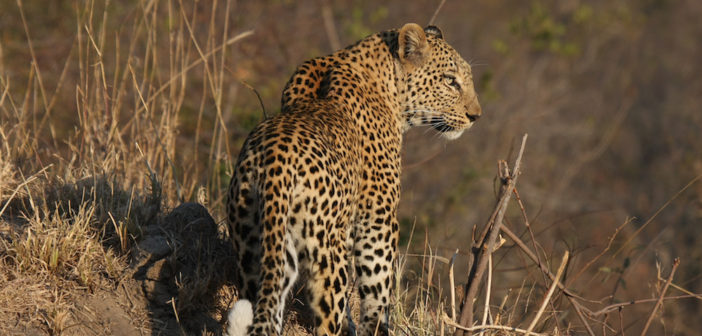Cape Town, South Africa – If cats do have nine lives, leopards are on their last. Especially the big, strong males of the species, as the DEA seems set on reintroducing leopard trophy hunting quotas.
The DEA issued a zero quota for 2016 and 2017 – effectively enforcing a ban on leopard trophy hunting in South Africa. The decision followed a report by the Scientific Authority that found leopard population estimates unreliable and consequently, hunting practices unsustainable. Accordingly, a precautionary hunting quota in 2018 was only to be implemented following a number of interventions including the development of the norms and standards for the management and monitoring of leopard hunting.
These norms, which apply if quotas are reinstated, were recently released by the DEA and opened for comment.
Contentiously, the norms state that only adult males, seven years or older, may be hunted. While meant to protect females, and viably reproductive leopards, the norms quote a study which concludes that off take of older males has little impact on populations. According to the norms, if this age limit is adhered to the number of animals available to hunt exceeds that proposed for a sustainable population (10-16% compared to the recommended 3.6%), essentially negating the very purpose of the norms and standards.
Pieter Kat is just one big cat expert disputing this study. “The ‘7 year rule’ was based on a computer model generated on very limited information in Tanzania,” he says. “Off take of leopards in South Africa should not be guided by such non-reproducible studies in eastern Africa.” He goes on to say, “If those requirements cannot be proven, the entire proposed age limitation of hunted leopards becomes irrelevant.”
There is also debate concerning if hunters can reliably age and sex leopards. The DEA says professional hunters will need to “pass a once-off leopard hunting examination.” However, the website provides unlimited practice exams and one study quoted in the norms even says, “Respondents performed poorly at aging male leopards, with less than 50% of photographs classified correctly. Hunters recorded the lowest scores.”
In the event that a younger male or female is hunted, then that particular Leopard Hunting Zone (LHZ) will not be issued a quota the following season and an export permit won’t be issued. However Helen Turnbull of the Cape Leopard Trust says that, “there is an illustrated lack of compliance amongst the hunting fraternity, as well as a lack of capacity at management level for adequate and realistic policing of the new protocols that are proposed in order to ensure only males over the recommended age of seven years are targeted.”
The norms propose that the SANBI-established LHZs be allocated one permit per property or zone per year, stating that a “hunting permit allocated to one LHZ cannot be used in another LHZ.” But Kelly Marnewick of the EWT says, “apart from the geographic limitation of one quota per LHZ, there needs to be clear reference as to how the quota will be allocated to an applicant.” She has also raised concern that there will not be “enough time for DEA and SANBI to evaluate and analyse data and adaptively manage the quota for the following year.”
Turnbull also questions the work done by SANBI in the creation of the LHZ. She says, “the population estimates in the Western and Eastern Cape have not been adequately researched. We, as the Cape Leopard Trust, do not agree with the proposed hunting quota of 4 leopards for the Western Cape Province, and are in support of the rejection of this quota by the provincial issuing authority, Cape Nature.”
Tharia Unwin, Chief Executive Officer of the PHASA, says that without hunting, landowners have no incentives for habitat conservation, “The legal off take of leopard is not the problem. On the contrary, without any legal off take, there is no incentive for landowners to tolerate predators.” But Bool Smuts of the Landmark Leopard Predator Project believes, “this document is a deliberate attempt, despite evidence to the contrary, to appease the hunting industry.”
Although the purpose of the norms is to manage the hunting of the leopard in order to reduce the impact of this practice on the species, trophy hunting seems to be going ahead despite the fact that it may still present a high risk to the survival of leopards in South Africa.
Read original article: http://traveller24.news24.com/Explore/Green/leopards-in-the-crossfire-trophy-hunting-and-the-7-year-rule-20170327
Featured image credit Gimli62, CC BY-NC 2.0





